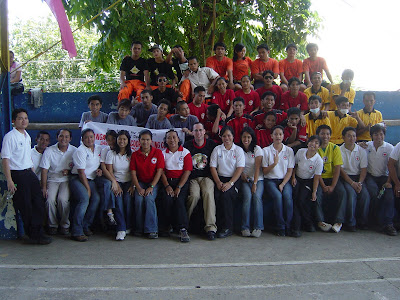The postings on this website are provided by individual contributors and do not necessarily represent any company, government or NGO’s positions, strategies or opinions. The information is designed for educational and awareness purposes only and is not provided as a professional service. None of the material is provided as legal advice. The contributors assume no responsibility for the accuracy of the information contained on this website. This website is available to the public and no confidential information should be posted.
ALL INFORMATION IS PROVIDED BY US ON AN "AS IS" BASIS ONLY. WE PROVIDE NO REPRESENTATIONS AND WARRANTIES, EXPRESS OR IMPLIED, INCLUDING THE IMPLIED WARRANTIES OF FITNESS FOR A PARTICULAR PURPOSE, MERCHANTABILITY AND NONINFRINGEMENT.
Each person accessing this information assumes full responsibility for its use and understands and agrees that the authors of this website are not responsible or liable for any claim, loss or damage arising from the use of the information including, without limitation, any direct, indirect, incidental, special or consequential damages.
Information may be changed or updated without notice. We may also make improvements and/or changes in the products and/or the programs described in this information at any time without notice.
Unless otherwise stated, the content on this website are copyrighted materials. They may not otherwise be copied, reproduced, distributed, published, downloaded, displayed or transmitted by any means without the prior written permission of the writer, or of the copyright owner. The names of individual organizations, products, services and content may be the property of their respective owners.
We assume no responsibility regarding the accuracy of the information that is provided by us and use of such information is at the recipient's own risk. We provide no assurances that any reported problems may be resolved with the use of any information that we provide. By furnishing information, we do not grant any licenses to any copyrights, patents or any other intellectual property rights.
Do not provide confidential or proprietary information from you through our website. Please note that any information or material sent to us will be deemed NOT to be confidential. By sending us any information or material, you grant us an unrestricted, irrevocable license to use, reproduce, display, perform, modify, transmit and distribute those materials or information, and you also agree that we are free to use any ideas, concepts, know-how or techniques that you send us for any purpose.
We make no representations whatsoever about any other websites which you may access through this one. When you access any other website, even one that may contain our logo or name, please understand that it is independent from us, and that we have no control over the content on that website. In addition, a link to anyother website does not mean that we endorse or accept any responsibility for the content, or the use, of such website. It is up to you to take precautions to ensure that whatever you select for your use is free of such items as viruses and other items of a similar destructive nature.
IN NO EVENT WILL WE BE LIABLE TO ANY PARTY FOR ANY DIRECT, INDIRECT, SPECIAL OR OTHER CONSEQUENTIAL DAMAGES FOR ANY USE OF THIS WEB SITE, OR ON ANY OTHER HYPER LINKED WEB SITE, INCLUDING, WITHOUT LIMITATION, ANY LOST PROFITS, BUSINESS INTERRUPTION, LOSS OF PROGRAMS OR OTHER DATA ON YOUR INFORMATION HANDLING SYSTEM OR OTHERWISE, EVEN IF WE ARE EXPRESSLY ADVISED OF THE POSSIBILITY OF SUCH DAMAGES.
















 In the left frame are categories for many of the templates, best practices calendar of events, and other resources available on their
In the left frame are categories for many of the templates, best practices calendar of events, and other resources available on their 












